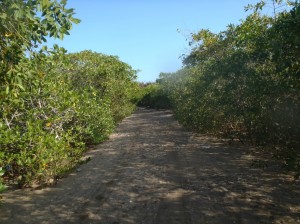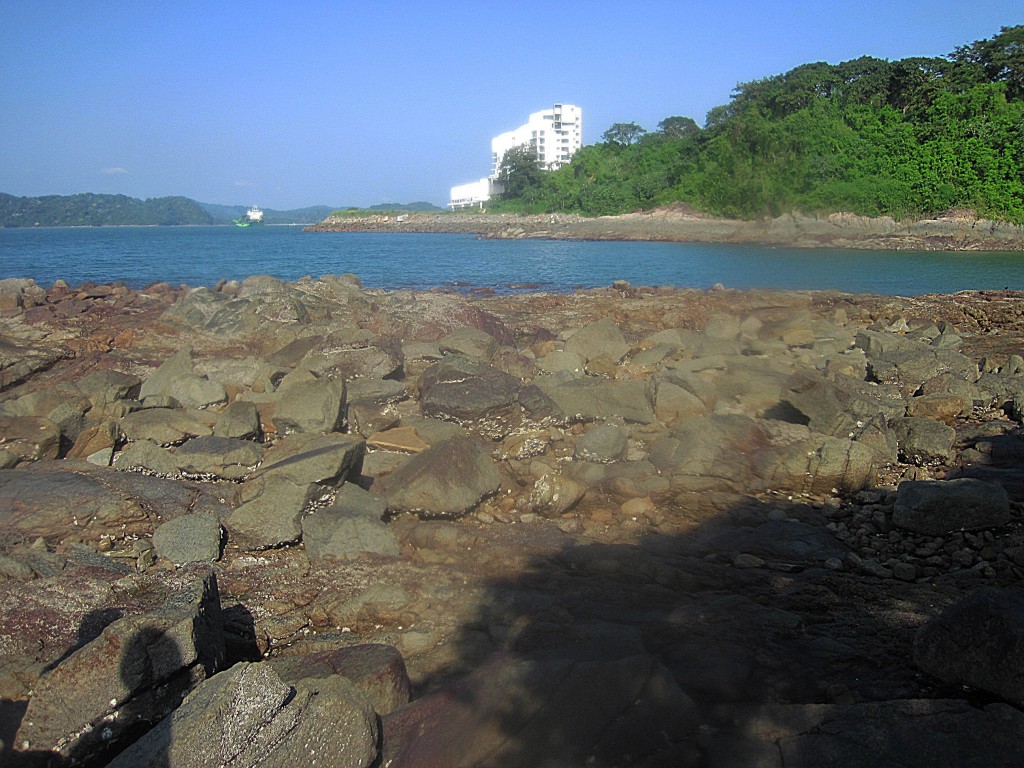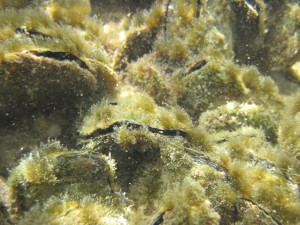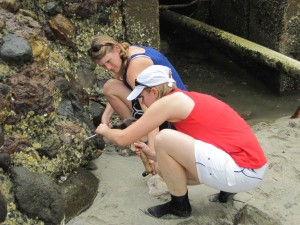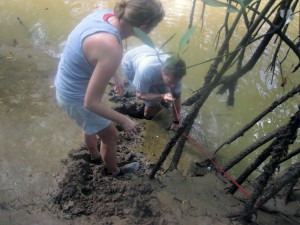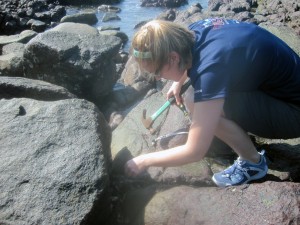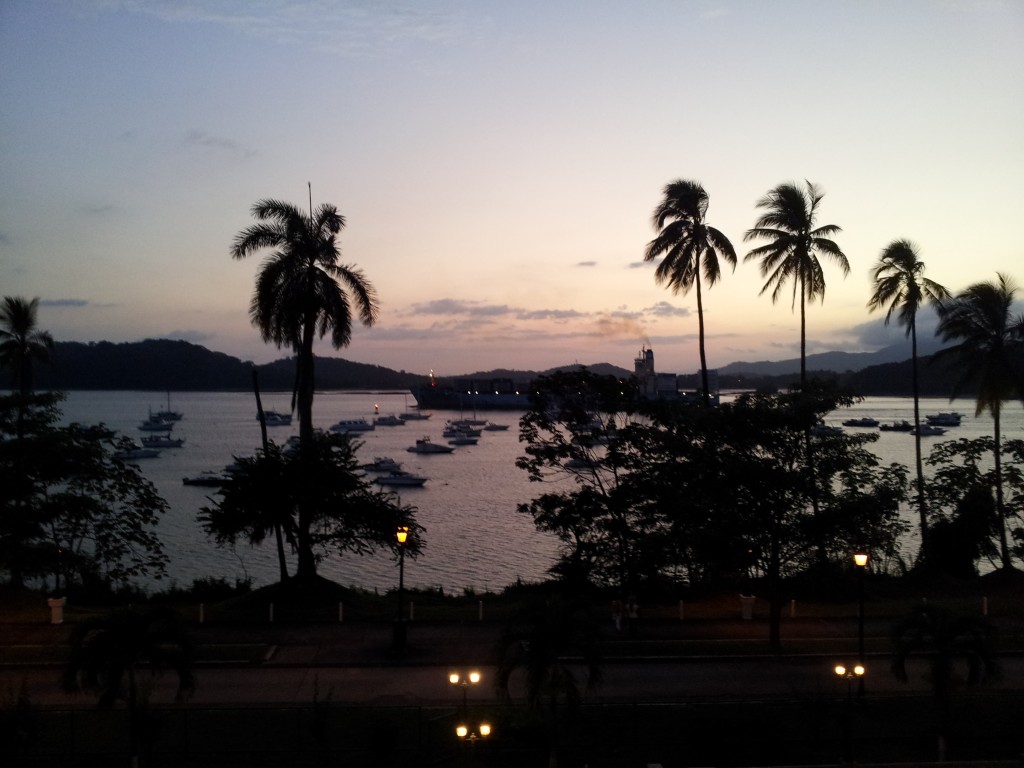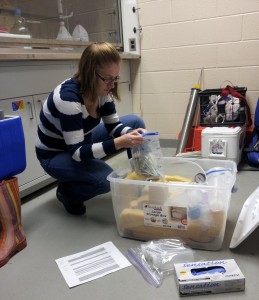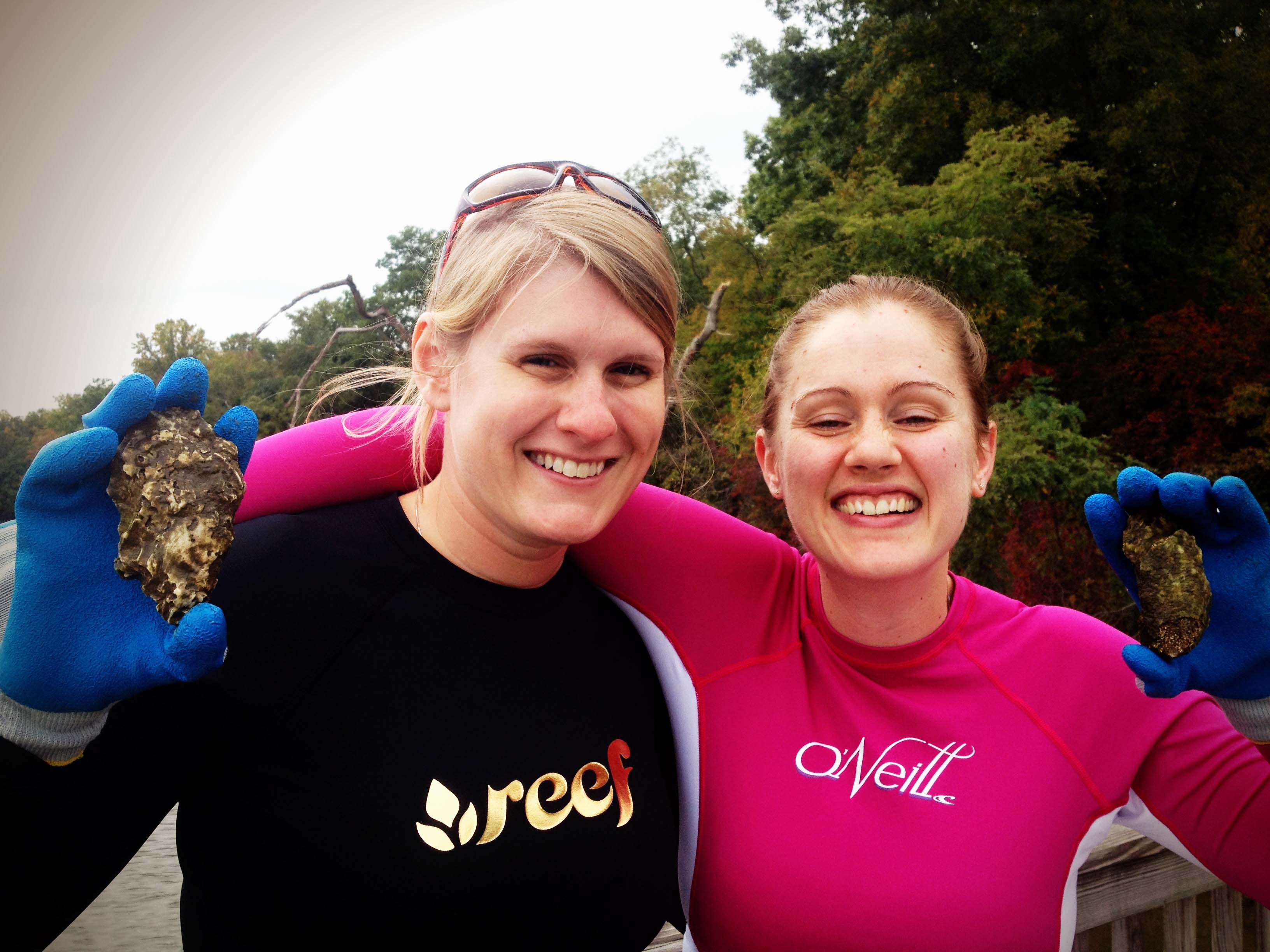by Katrina Lohan
In search of more Striostrea sp., Kristy and I, with our collaborator from the Smithsonian Tropical Research Institute, Mark Torchin, traveled to the beach at Veracruz at low tide. As we have been typically finding this species of oyster submerged in small ponds or attached to rocks in the intertidal, we were prepared to sample fast to beat the incoming tide.To get to the right habitat, we had to carry all our gear about a mile from the beach, across a sand spit to the rocks that are exposed at low tide. Unfortunately for us, the sampling did not go particularly quickly. While these oysters tend to be large, they were also covered in mud and algae, making it difficult to distinguish between the rocks and the oysters. With each oyster that I was able to hammer off, the tide was slowly pushing me back into the rocks. Finally, Mark warned us that we should start heading back as we didn’t want the tide to trap us on these rocks by covering the sand spit before we had crossed it.
I quickly took a sample of the surface water, in the hopes that I can compare the parasites found in the surrounding water to the parasites found in the oysters. Then we started to head back, picking up a few more oysters along the way. As these oysters are big, they are also heavy! So our journey back to the beach was much slower than our journey out to the rocks. Thankfully we returned safely to the car, with all our gear and oysters, and headed back to the lab to process them.



